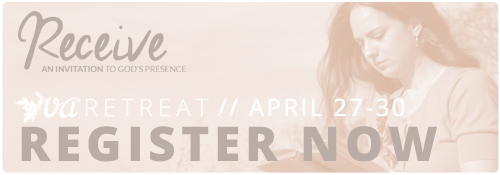What is one of the most famous invitations from Jesus when it comes to following?
Come follow me, and I will show you how to fish for people. (Matt. 4:19, NLT)
Come, follow me. He extends the invitation. But what does it mean to follow? If you are like me, this verse and subsequent verses are so familiar I can inadvertently switch into autopilot. Today, let’s slow down and sit at the feet of our Teacher as he says to you and me, “Come, follow me.”
1. Jesus will show you how to fish and what to focus on.
I will show you how to fish for people. (4:19)
You may fish in a large lake, on the bank of a flowing river, from a boat in choppy waters. You may wade out into the water, cast your pole from the bank, or heave nets over the side of a boat. Jesus was speaking to fishermen, so the analogy was fishing. Had he been speaking to bankers, I imagine he could just as easily have said, “Come follow me, and I will show you how to make deposits in people’s hearts.” Or “Come follow me, I will show you how to cook meals that will feed more than the stomach.” Or “Come follow me, I will show you how to plan lessons that reach into eternity.”
Regardless of context, following doesn’t mean that we have to know everything, Jesus promises that he will show you what to do. He also highlights that his focus is on people. Strategy, location, skills matter and we should invest in them; but ultimately? All that we do is about people.
2. To follow, we have to leave.
And they left their nets at once and followed him. (4:20)
Because most reading this post have physically gotten on a plane and left family and friends, it is tempting to think, “Nailed it!” But following is not a once and done. We also know that Jesus is the master of speaking on many levels. Yes, following may involve physically leaving as it did for the disciples. And. And following may also involve leaving how our organization has “always” done something. It might involve leaving what you want and dying to self. It might involve you leaving a longed for change and choosing to stay. Following and leaving are paradoxical.
3. Following doesn’t require us to go it alone.
A little farther up the shore he saw two other brothers, James and John, sitting in a boat with their father, Zebedee, repairing their nets. And he called them to come, too. (4:21)
This is the second brother pair called. In verse 18, Jesus calls brothers Simon and Andrew. Now, Jesus could have called anyone he wanted. When repetition occurs in the Bible, it is a small arrow saying “Pay attention, don’t miss this.” While the invitation to follow may be personal, it is also communal.
4. But following might require you to leave people and work.
They immediately followed him, leaving the boat and their father behind. (4:22)
While James and John got to go together when they followed, they did not get to go with everyone they loved. They also didn’t get to keep fishing. We have no idea if they loved fishing or if they were relieved not to fish. For your context, you knew that you would need to leave family and friends. I would imagine that you spent months traveling around and visiting people before you left.
What you might now have realized is the extent to which your life would involve a revolving door of people. Even if you are going on twenty plus years, chances are slim that who you started with on the field (not talking about spouses!) is who you are still serving with. Count up the number of goodbyes you have said in just the last two years. Following Jesus requires people leaving.
5. Following involves teaching, announcing, and healing.
Jesus traveled throughout the region of Galilee, teaching in the synagogues and announcing the Good News about the Kingdom. And he healed every kind of disease and illness. (4:23)
We see from this what Jesus meant when he said he would “show them how to fish.” For us, teaching in the synagogue means that we need to know the Bible. Not be masters or freak out if you don’t know the original Greek and Hebrew. But we need to study it and continue to grow. Announcing the Good News is going to be context specific. You may be in a location where you may publicly announce. For others, announcing may look like bandaging wounds. While for others play Uno, investing in relationships so that when questions arise, a relationship is established and announcing comes in the back door.
Healing of every kind of disease. As followers of Christ, we are healers of diseases and illnesses. Healing may be physical, emotional, relational.
6. Following results in news of Jesus spreading.
News about him spread as far as Syria, and people soon began bringing to him all who were sick. (4:24a)
If only the news spread quickly, right? And in some regions of the world, the Good News is spreading rapidly. If you serve in such a location, we celebrate with you! But spreading doesn’t always look like spreading. It can get hidden in red tape, rule changes, and the ebb and flow of governments.
But here is the good news for us:
7. It is Jesus who heals. We are just asked to bring the people.
And whatever their sickness or disease, or if they were demon possessed or epileptic or paralyzed—[Jesus] healed them all. (4:24b)
Following does not mean that the healing is ultimately our responsibility. As we have been exploring in recent weeks, we are invited to participate; but ultimately as followers we are not responsible for the changes, Jesus is.
What is our part? To take the step in front of us. To respond to the invitation to Come follow me. To remember we do not have to go it alone, but we will have to leave.






[…] Linking up with Velvet Ashes where the theme this week is “Follow” […]
Fabulous post Amy! Number 2 was pretty mind blowing. Having to leave the idea of leaving and learn to be content where I am…ouch. That’s hard but then there’s Number 7 reminding me that He’s got this. Yes it’s slow and hard going but my yolk is light because He’s got this.